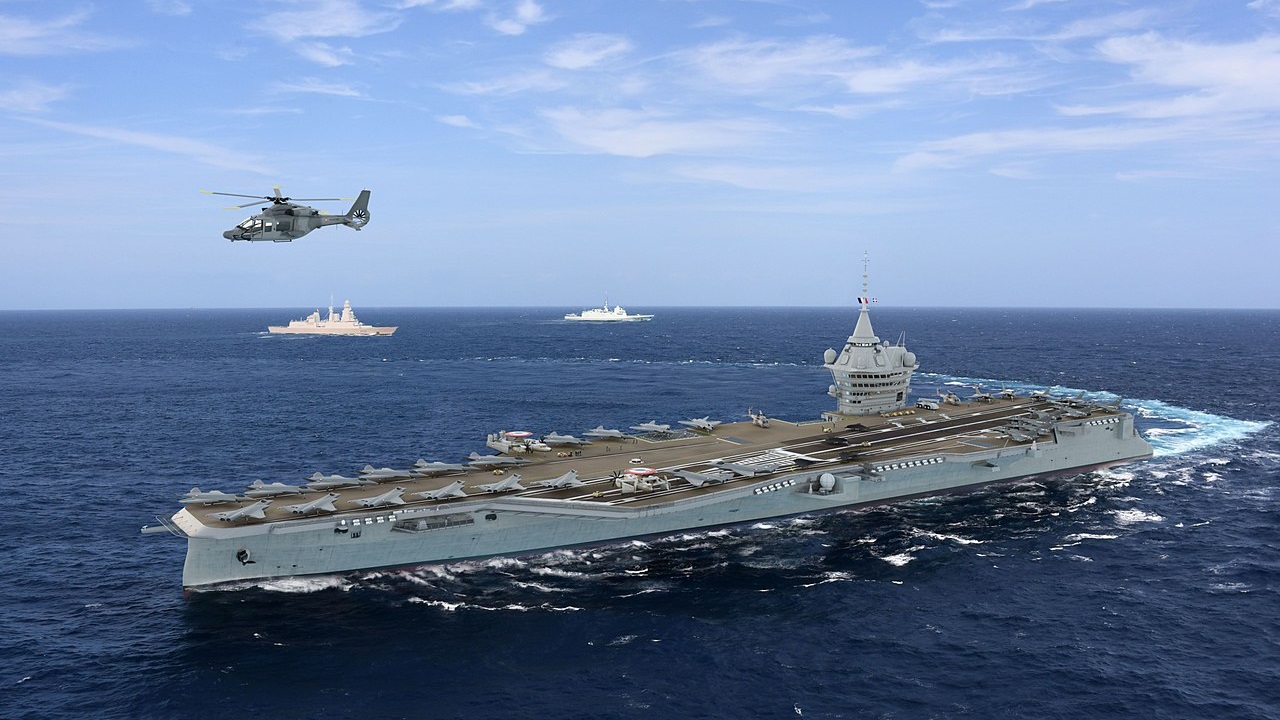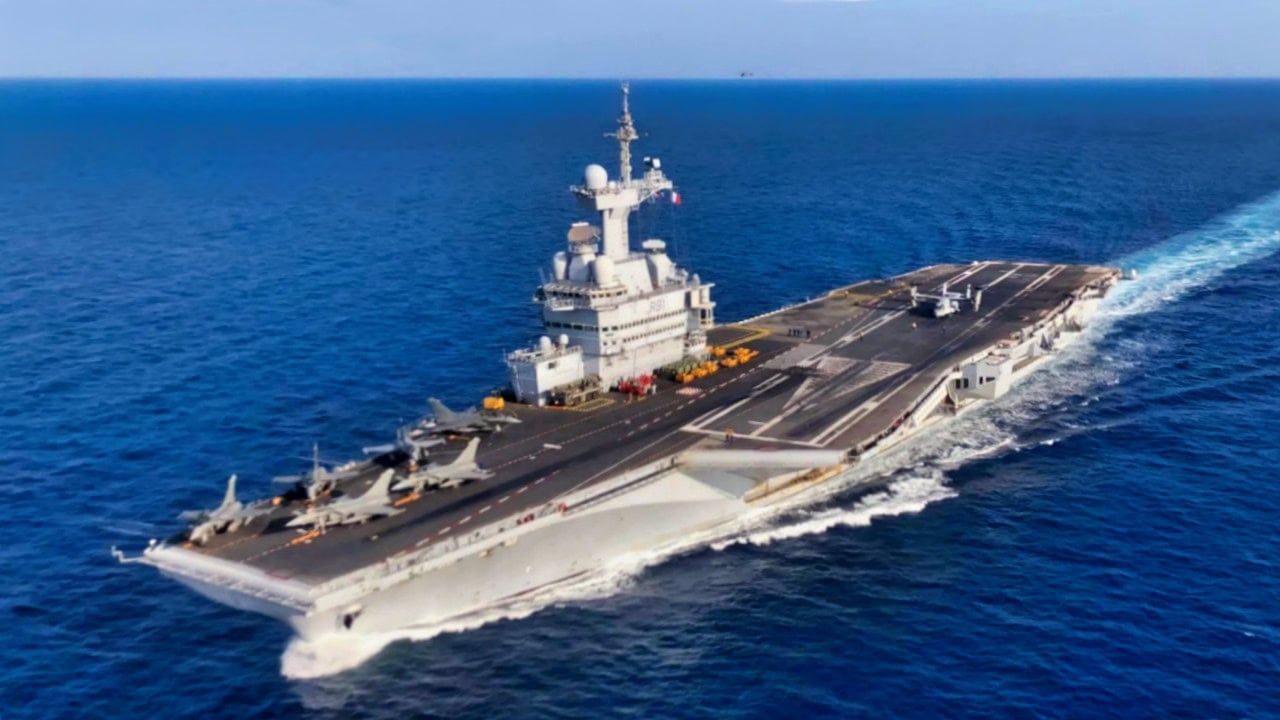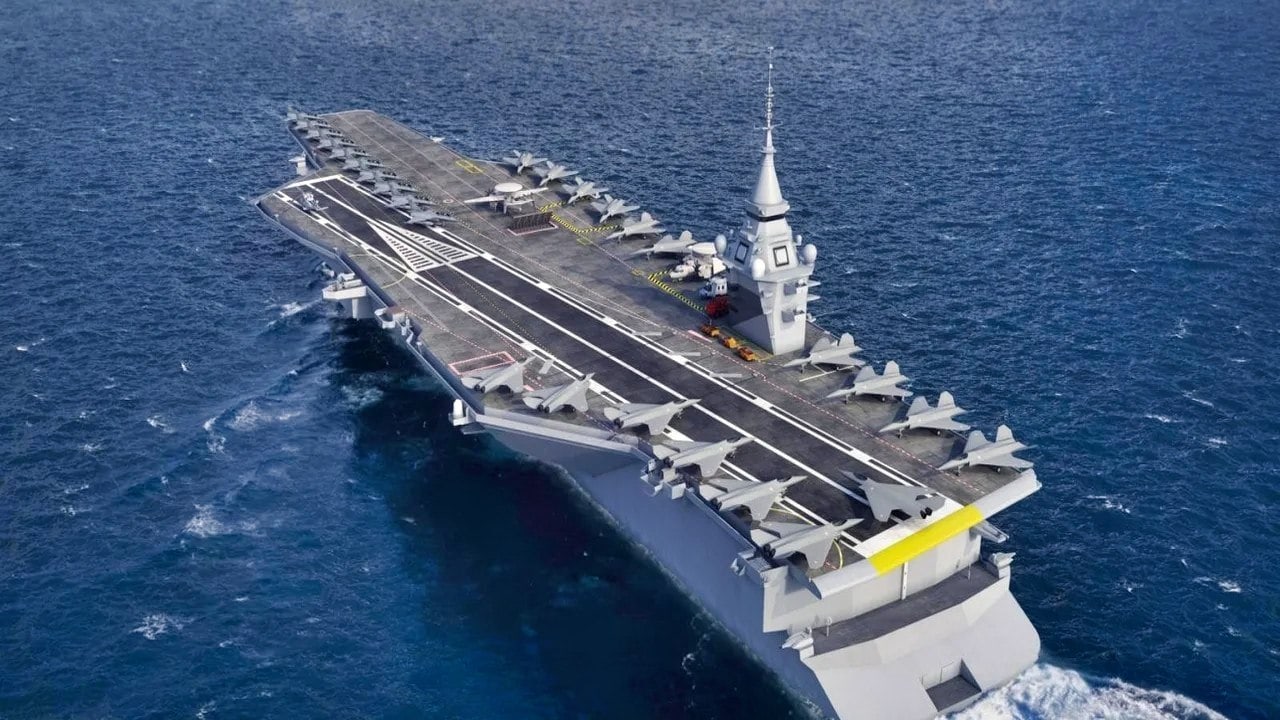Article Summary: France is developing the PANG, a next-generation aircraft carrier set to replace the Charles de Gaulle in 2038. The nuclear-powered warship will be the largest vessel ever built in Europe and feature EMALS catapults to launch both Rafale-M fighters and future NGF jets.
Key Point #1 – Designed to support carrier drones (CCAs) and advanced battle management systems, the PANG will be a key component of France’s power projection.
Key Point #2 – However, delays and budget constraints may push back production and sea trials, raising concerns about whether France can maintain its carrier capability in an increasingly competitive global naval landscape.
How France’s PANG Aircraft Carrier Could Change Naval Warfare
France’s Marine Nationale has ambitious plans for its future aircraft carrier component.
This centers around a program to replace the current nuclear-powered Charles de Gaulle, and the only carrier in the fleet, with what is currently being called the Porte-avions de nouvelle génération (PA-NG), or “new generation aircraft carrier.”
France’s Minister for the Armed Forces, Sébastien Lecornu, had previously announced that construction would commence towards the end of 2025 or the beginning of 2026 timeframe. This may encompass initially only some fabricating components of the vessel, with the full-scale ship-building phase now delayed until 2031.
The first sea trials were initially scheduled only for 2036-37, with the carrier to enter service in 2038. This is, coincidentally, the same year that the Charles de Gaulle would be retired from service.
“The French MoD are hoping for a ‘perfect dovetail’ – one ship ready to take over as the new carrier at the same time as the old, CDG is going out the door,” said a Paris-based defense analyst who spoke to 19FrotyFive. “Planning for this kind of non-disruptive transition might work – and then it might not. These kinds of complicated new-era ship programs take a lot of twists and turns along the way.”
New Generation Launch and Recovery
Like almost all the other new-generation carriers either entering service or under development, the PANG will feature not one but three new Electromagnetic Aircraft Launching Systems (EMALS). This system is of American design and will replace the Charles de Gaulle’s steam-powered R91 catapult launching system.
The EMALS, while requiring less power and putting less strain on the nuclear reactor, also makes it possible to launch aircraft of very different masses while saving energy.
In a report from last year’s Euronaval expo, engineering specialists from France’s Naval Group explained that the adjustable launch system of the EMALS “supports a broader range of aircraft, from heavily loaded fighter jets to lighter unmanned aerial systems, paving the way for a versatile fleet that can adapt to diverse mission profiles.”
The three catapults will permit a French carrier to launch and recover aircraft at a much higher op-tempo than previous carriers. Again, from the reporting at Euronaval, this capability is critical to the future of the Marine Nationale.
As mentioned above, the PANG will be called up to launch any wide variety of aircraft. The latest variant of the Dassault Rafale-M will still be in operation on the carrier, but plans are for there to also be a significantly heavier fighter aircraft. This would be a carrier-capable variant of the New Generation Fighter (NGF) that is supposed to be the final design of the multinational Future Combat Air System (FCAS) program.
EMALS are much more capable of launching these heavier, next-generation aircraft and will permit those aircraft to carry larger weapons loads, thereby maximizing their operational effectiveness.
Another issue is that along with these heavier, next-generation aircraft, the carriers will be expected to simultaneously deploy the much smaller and lighter Collaborative Combat Aircraft (CCA)—also called “Loyal Wingman” similar to those being developed by the US Navy.

PANG Aircraft Carrier
Those 4 Words: Won’t Sail Anytime Soon
By 2030, the number of aircraft carriers in service worldwide will increase from 19 to 27.
This includes the six varied designs that will be used by the Chinese People’s Liberation Army Navy (PLAN) and 2 in India. However, when it enters service, the PANG will most likely be the only nuclear-powered aircraft carrier with a CATOBAR system besides the American Nimitz-class and the Gerald R. Ford-class (one currently in service, 10 more planned).
The PANG will be similar in size to the Gerald R. Ford-class, only slightly shorter in length but somewhat wider. It will also be the largest naval vessel ever built in Europe at 75,000 tons. Its propulsion system will include two new reactors that will feature two boiler rooms, each at 220 MW, an almost 50 percent increase over the 150MW for the R91 steam catapult system.
Since the PANG is larger, it will be capable of carrying the E-2C Hawkeye, AEWC aircraft, and a larger number of the carrier Rafale-M, plus the future NGF that is supposed to be larger than the Rafale, plus the CCA platforms and a variety of UAVs.

U.S. 5TH FLEET AREA OF OPERATIONS (April 24, 2019) A U.S. Marine MV-22 Osprey assigned to the 22nd Marine Expeditionary Unit sits on the flight deck of France’s Marine Nationale aircraft carrier FS Charles De Gaulle (R 91). This was the second time that Ospreys have landed aboard the French vessel. Marines and Sailors assigned to the 22nd MEU and Kearsarge Amphibious Ready Group are currently deployed to the U.S. 5th Fleet area of operations in support of naval operations to ensure maritime stability and security in the Central region, connecting the Mediterranean and the Pacific through the western Indian Ocean and three strategic choke points. (U.S. Marine Corps photo by Maj. Joshua Smith/Released)
The French armed forces look at this ship as one that will not just launch aircraft in support of other missions by other branches of the armed forces. The PANG is designed to be a real battle management platform that will be in line with the Pentagon’s Joint All-Domain Command and Control (JADC2) concept.
While France is undoubtedly excited about the new aircraft carrier, it won’t sail anytime. And, of course, a lot can change with looking so far out into the future.
About the Author: Reuben F. Johnson
Reuben F. Johnson is a survivor of the February 2022 Russian invasion of Ukraine and is now an Expert on Foreign Military Affairs with the Fundacja im. Kazimierza Pułaskiego in Warsaw. He has been a consultant to the Pentagon, several NATO governments and the Australian government in the fields of defense technology and weapon systems design. Over the past 30 years he has resided in and reported from Russia, Ukraine, Poland, Brazil, the People’s Republic of China and Australia.

